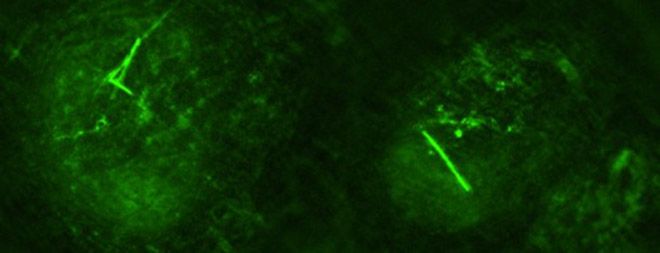Plant-Derived Nanotubes Provide Personalized DNA Delivery

(ISNS) -- Personalized medicine took one step closer to reality recently with the development of plant-derived nanotubes.
These nanotubes – tiny structures several hundred times thinner than a human hair – hone in on specific tissues in the body and deliver their cargo, in this study's case a healthy gene to help override a dysfunctional copy. Nanotubes have many uses, such as delivering chemotherapy drugs directly to a tumor. As of now, chemotherapy is delivered to the entire system and often causes damage to healthy tissue. Using this direct-delivery method, chemotherapy can maximize its effectiveness on tumors while minimizing harm to healthy tissue.
Many labs are attempting to deliver genes using nanotubes from different materials – mainly carbon or short chains of amino acids – but these are the first nanotubes derived from plant material.
The findings were published in the February edition of Biomacromolecules.
Research into this method of gene delivery is in the very earliest stages. Labs are experimenting with cells cultured in petri dishes and mice.
In a living organism, the nanotubes would be introduced into the blood stream where they would begin their journey to the affected tissue. Equipped with a "homing" protein, the nanotubes target the desired cell type.
"There are all kinds of receptors on the outside of cells, like little zip codes. They define the different cell, tissue or organ types based on proteins that stick out on the outside of these cells," said Wilfred Vermerris, one of the University of Florida researchers involved in developing the nanotubes.
Sign up for the Live Science daily newsletter now
Get the world’s most fascinating discoveries delivered straight to your inbox.
The homing protein on the nanotube finds a specific protein in a specific cell type and connects with it in a lock-and-key mechanism. Once the key is in the lock, the nanotube enters the cell and delivers the gene.
Some genetic diseases result in nonfunctioning proteins due to a faulty piece of DNA. These nanotubes provide the working copy of the DNA to act as a "satellite chromosome," according to Vermerris. The new gene does not supplant a dysfunctional gene; it simply provides the cell with a working blueprint for a protein, allowing the cell to carry on as though nothing were wrong. But patients would have to receive regular injections of the nanotubes in order for them to work.
Some researchers use disabled viruses in a similar fashion, but the body often recognizes these viral couriers as foreign invaders and destroys them before they can deliver their cargo. Carbon nanotubes also trigger the immune system to attack, but not as strongly as viruses, Vermerris said. He added that he and his team are hopeful that the body's familiarity with plant polymers might mean that their nanotubes may only trigger a minimal immune response.
Vermerris believes that his plant-derived nanotubes may offer a safer, more sustainable alternative to their carbon counterparts.
Carbon nanotubes are sharp and inflexible, according to Vermerris. "They can puncture cells and damage them that way."
The plant nanotubes are softer and more flexible than carbon, which would allow them to pass through the circulatory system more easily.
Vermerris also stressed that researchers still don't know the long-term effects of carbon nanotubes in the body. "Are they being dumped by the body in urine or feces? Or do they stick around and start doing damage in the body?"
Vermerris and his team suspect that their plant-based nanotubes would degrade safely within the body, but that they have yet to confirm if that is the case.
Kostas Kostarelos, a professor of nanomedicine at the University of Manchester in the United Kingdom, met Vermerris's claims with some skepticism.
The plant nanotubes are much longer and wider than carbon nanotubes, Kostarelos said. Carbon nanotubes are about one micrometer long, whereas the shortest plant nanotube was 10 micrometers.
"The thicker the material and the longer the material, the more difficult it will be for the body to handle the object," Kostarelos said.
Nanotubes and other fiber-like objects longer than two to four micrometers can cause inflammation in lung tissue when inhaled, Kostarelos said. But whether or not nanotubes – be they plant or carbon based – will cause harm to living organisms when injected into the bloodstream remains to be seen.
"The concerns are legitimate but we can't really tell what will happen until we test it," Vermerris said.
Vermerris's team will test their nanotubes on mice to assess their efficacy and safety. He added that he is confident his team will be able to make the plant-based tubes smaller if need be.
Kostarelos said he was impressed by the idea of "green" nanotubes.
The nanotubes come from waste produced from processing plants for fuel. Vermerris said that the plant nanotubes are much cheaper than carbon nanotubes, which currently cost $500 per gram.
For now, though, plant-derived nanotubes are a promising new addition to the field of nanomedicine.
This story was provided by Inside Science News Service. Cynthia McKelvey is a science writer based in Santa Cruz, Calif. She tweets @NotesofRanvier.









